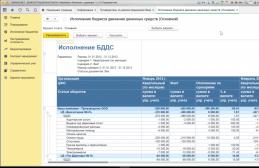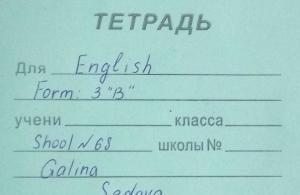A consumer loan is the sale by trade enterprises of consumer goods with deferred payment or the provision by banks of loans for the purchase of consumer goods, as well as for the payment of various types of personal expenses (tuition fees, medical care, etc.).
Unlike other loans, the object of a consumer loan can be both goods and money. Goods sold on credit, as well as those paid for through bank loans, are durable consumer goods.
The subjects of credit, on the one hand, are lenders, in this case, commercial banks, special consumer credit institutions, shops, savings banks and other enterprises, and on the other hand, borrowers - people.
The main distinctive features of domestic consumer credit are:
1) contractual relationship between the lender and the borrower;
2) payment;
3) urgency;
4) target nature.
Wherein:
The contractual regime of relations between the lender and the borrower is ensured through the conclusion of a special agreement between them - a loan agreement;
Payment of a consumer loan is ensured by the establishment and subsequent collection of an interest rate on the loan from the borrower; - the urgency of a consumer loan is ensured by the establishment and subsequent observance by the borrower of the period for using the loan (the repayment period of accounts payable); - the targeted use of consumer credit is ensured by the lender’s systematic monitoring of transactions performed by the borrower with credit funds.
The terms and conditions for granting a consumer loan govern the relationship between the borrower and the bank arising from the bank’s provision of a loan to the borrower.
A loan agreement is concluded by the borrower submitting to the bank an application containing, inter alia, the borrower’s proposal (offer) to enter into a loan agreement, and the bank’s acceptance of this offer by crediting the loan amount to the account. The date the loan is credited to the account is the date the loan agreement is concluded, as well as the date the loan is granted.
The loan debt is understood as the total amount of the borrower's debt on the principal debt, accrued but unpaid interest, commissions and the amount of the penalty.
The principal debt on a loan is understood to be the borrower's debt for the outstanding part of the loan, excluding debt for accrued interest, commissions, penalties and expenses on the loan.
In accordance with the loan agreement, the bank provides the borrower with a loan in the currency, amount and for the period specified in the application.
For using the loan, the borrower pays the bank monthly interest accrued at the rate specified in the application.
Interest for using the loan is accrued on the amount of the principal debt on the loan for each day the loan is used and is calculated based on the actual number of days in a year.
Repayment of the principal debt on the loan and payment of interest accrued on its amount is made by the borrower monthly on the repayment dates specified in the application, starting from the repayment date falling on the month following the month of the loan. Repayment of the principal debt on the loan and payment of accrued interest is made in equal monthly (annuity) payments, which consist of the amount of interest accrued on the date of repayment and part of the principal debt on the loan.
The borrower has the right to early repayment of the entire principal amount of the loan together with accrued interest or part of the principal debt on the loan by sending a written notice to the bank in the form established by the bank (notice).
The Borrower undertakes:
1) return the loan to the bank, pay interest for using the loan, as well as bank commissions in the manner and on the terms provided for in the loan agreement, as well as reimburse the bank for all costs associated with forced collection of debt under the loan agreement;
2) ensure the availability of funds in the account necessary to repay the loan debt within the time frame and manner established by the loan agreement;
3) notify the bank about changes in personal data that may affect the fulfillment of obligations under the provision agreement;
The bank has the right to early demand from the borrower the entire amount of debt on the loan in the following cases:
1) if the borrower has not repaid the loan principal and/or interest in the amount and terms established by the loan agreement;
2) if any other event occurs that, according to current legislation, may serve as a basis for early claim of the loan. In case of untimely repayment of debt under the loan agreement, the borrower pays the bank a penalty in the amount specified in the application.
The penalty is charged in addition to and regardless of the interest for using the loan. It is calculated from the outstanding amount of debt under the loan agreement (principal, interest, commissions) for each day of delay from the date when the amount was due for payment to the date of its actual payment, inclusive.
If, for any reason, the amount of payment made to repay the borrower's debt under the loan agreement is insufficient to cover the entire amount of debt to be repaid, then this amount first of all pays off the bank's costs for obtaining execution, and secondly - accrued interest , in the third place, the amount of the principal debt on the loan is repaid, then - any other amounts payable to the bank under the terms of the loan agreement.
If the bank receives, under a voluntary insurance agreement concluded by the borrower with the bank being designated as the beneficiary, the amount of insurance compensation from the insurance company, the latter is sent primarily to repay the borrower's debt on the loan, and after repayment of the borrower's debt on the loan, part of the amount exceeding the borrower's debt on the loan, sent by the bank to the borrower.
The loan agreement comes into force from the date of its conclusion and is valid until the borrower fully repays the loan debt and other monetary obligations of the borrower under the loan agreement.
All disputes arising from the loan agreement are subject to consideration in a court of general jurisdiction, determined according to the application, in accordance with the current substantive and procedural law of the Russian Federation.
The contract is considered concluded when the parties reach agreement on all its essential terms.
The first condition: the subject of the contract. It records the agreement of the parties on the loan amount. It is determined by the financial needs and capabilities of the lender and borrower.
Second condition: terms and purposes of the loan. The agreement fixes the term of the transaction, which determines the time limits for using credit funds, repaying the principal amount of the loan and the interest rate.
The loan term begins the next day after the calendar date from the date of conclusion of the agreement.
Third condition: loan rate. When determining the loan rate, various factors must be taken into account. Such as: cost for the bank of raised funds; the reliability of the borrower and the degree of risk associated with the loan; expenses for processing and monitoring loan repayment, etc.
Loan repayment, interest and penalties are paid:
a) in cash, through a bank cash desk, or through an ATM;
b) transfer from deposit accounts;
c) through deduction from wages, pensions, etc.;
d) transfers through the network of branches of the Federal State Unitary Enterprise "Russian Post", etc.
In addition, the bank always reserves the right to collect the loan early.
After the loan is issued, the bank continues to work with the client to ensure repayment of the loan.
During the period of validity of the loan agreement, the bank:
1) controls the borrower’s compliance with the terms of the agreement;
2) takes measures to repay overdue debts. If payments are not received from the borrower before the end of the calendar month, the amounts of payments not made on time on the last day of the month are charged to the account of overdue loans and overdue interest. On the same day, the bank must take measures to repay the debt by the borrower.
3) formalizes changes to the terms of the loan and other agreements, and also in case of violation by the borrower of the terms of the loan agreement, can resolve the issue of terminating the agreement unilaterally;
4) enters the necessary information into the database of individual borrowers;
5) carries out operations to form a reserve for possible loan losses.
The sequence in decision-making by the lender and the borrower when preparing and concluding a loan agreement for obtaining a consumer loan is presented as follows:
Stage 1: request for a loan (usually verbally). Offer to submit the necessary documentation;
Stage 2: compiling the necessary documentation, including information about yourself, occupation, income. Checking the submitted documentation in various ways, determining the borrower’s solvency;
Stage 3: provision of guarantees for loan repayment (pledge of property, deposit, guarantee, etc.). Establishing the reliability of these guarantees;
Stage 4: preparing a loan repayment plan. Determining the acceptability of the loan repayment schedule and its sources;
Stage 5: assessment of the terms of the loan agreement. Proposals on the terms of the loan agreement (loan amount, terms, interest on the loan, etc.);
Stage 6: conclusion of a loan agreement.
Based on the information provided by the client, creditors (banks) are required to calculate how much income is actually available at his free disposal. To do this, bank employees use average data on the budgets of families with different numbers, price levels, inflation, etc., and check the information received to determine the security of the transaction with a possible borrower.
The bank has the right to refuse to issue a loan in the following cases:
If the inspection reveals facts of providing forged documents or false information;
If the borrower's solvency does not meet the established requirements.
Analysis of the client's solvency precedes the conclusion of a loan agreement with him and allows us to identify risk factors that could lead to failure to repay the loan issued by the bank within the stipulated period, and to assess the likelihood of timely repayment of the loan.
Determining the borrower's solvency is an integral part of the bank's work to determine the possibility of issuing a loan.
Analysis of the borrower's solvency means the bank's assessment of the borrower from the point of view of the possibility and feasibility of providing him with loans, determining their likelihood of timely repayment in accordance with the loan agreement.
The credit manager determines the borrower's solvency on the basis of a certificate of his income, which contains the full name of the organization that issued the certificate, its postal address, telephone and bank details; and:
a) the duration of the borrower’s permanent work in this organization;
b) the current position of the borrower (whom he works for);
c) average monthly income for the last six months;
d) average monthly deductions for the last six months, broken down by type.
When calculating solvency, all obligatory payments specified in the certificate and questionnaire are deducted from income (income tax, contributions, alimony, compensation for damage, repayment of debt and payment of interest on other loans, the amount of obligations under provided guarantees, payments to repay the cost of goods purchased in installments and etc.).
After making a positive decision on issuing a loan, the following are issued:
a) loan agreement;
b) loan repayment schedule.
A loan agreement is an agreement under which a bank or other credit organization (lender) undertakes to provide funds (loan) to the borrower in the amount and on the terms stipulated by the agreement, and the borrower undertakes to return the amount received and pay interest on it.
According to the legislation of the Russian Federation, a loan agreement must be concluded in writing; failure to comply with the written form entails the invalidity of the agreement. The structure of the loan agreement is not regulated by law, and in practice it usually has the following sections:
Introductory part;
General provisions;
Subject of the agreement;
Terms of loan;
Terms and procedure of payments;
Rights and obligations of the parties;
Other conditions;
Legal addresses, details and signatures of the parties.
An important point when deciding whether to grant a consumer loan is assessing the borrower’s creditworthiness. Many different systems have been developed and exist for assessing the creditworthiness of a borrower - an individual, which make it possible to analyze and with a high degree of probability assess the risk of possible non-repayment of the loan amount. Fundamentally, these systems for studying the creditworthiness of a private borrower are no different and are usually aimed at obtaining the following information:
Profession and income received;
Work experience, including continuous;
Length of residence in this place;
Family status;
Existing assets, such as bank accounts, securities, real estate, vehicles, credit cards;
Existence of obligations to third parties;
Quality of credit history.
Sources of information are information provided by the client from the place of work or from the tax authorities about income, his application, as well as data on previously received loans available at the bank.
Equally important for making a decision on issuing a consumer loan is collateral. Guarantees from individuals or legal entities and pledge of liquid property are accepted as collateral. The type of security is determined in each specific case individually by agreement of the parties.
After the loan officer carefully studies the submitted documents and makes a decision on the possibility of lending to the borrower, a loan agreement is concluded between him and the bank. It specifies: the parties to the agreement, the purpose of the loan, the loan amount, the term of the agreement, the terms of the loan, the procedure for repaying the debt and interest on the loan, the amount of the interest rate, the grounds and conditions for changing it, the borrower’s obligations to ensure repayment of the loan, sanctions for non-fulfillment or partial non-fulfillment of obligations by the parties under the contract, the procedure for resolving conflict situations. For misuse and late repayment of the loan, the bank has the right to charge the borrower fines at established rates. If the borrower fails to pay regular payments, including interest, the bank has the right to early collect from him and his guarantors in court the entire debt on the loan with foreclosure of all property.
The maximum amount of the loan provided directly depends on the borrower’s income, as well as on the term and interest rate for this type of loan. It is calculated in such a way that the client’s income allows him to repay the principal debt and interest on it throughout the entire period established in the loan agreement.
Not everyone can get a consumer loan. It is important for the financial institution providing the loan to know that its money will be returned along with interest and other payments. To do this, they need to find out the credit history of the potential borrower, and it should be: the borrower is an honest person and he has a desire to pay debts, that is, debts have been paid on time in the past, which may lead to the idea that the borrower will do so in the future. Undoubtedly, the borrower must be able to repay the debt, that is, he must have a stable and not too small income - the more funds he has, the more ability he has to repay the debt.
Young people often have difficulty obtaining loans or making purchases on credit because they do not yet have a credit history. To obtain a loan, the borrower must prove that he is willing and able to pay off his financial obligations. He can, for example, open a credit account at a department store or get a credit card to pay for gasoline. Making timely payments on these bills will help you build a positive credit history. Having savings in the bank, he can take out a loan secured by the deposit amount. In this case, timely payments will also improve your reputation. If there is a need to borrow money before the borrower has established a good credit history, he can find a guarantor. This must be a person with suitable creditworthiness who guarantees repayment of the loan (for example, parents). The important thing is that a good reputation in the field of loans is itself a valuable financial acquisition; it takes a lot of time to obtain and maintain it, but it will increase the financial capabilities of the borrower.
consumer lending physical bank
The financial and economic situation in the country always shows its stability only as a certain conditionality and heterogeneity. In some areas it really takes place, but in others it does not.
Dear readers! The article talks about typical ways to resolve legal issues, but each case is individual. If you want to know how solve exactly your problem- contact a consultant:
APPLICATIONS AND CALLS ARE ACCEPTED 24/7 and 7 days a week.
It's fast and FOR FREE!
Various fluctuations in the world of finance and the needs of the population significantly affect the lives of ordinary people. Therefore, citizens of the Russian Federation are sometimes simply forced to apply to banks for a consumer loan on different conditions, on different issues and with some differences in the application rules.
What it is
Having analyzed the legislative acts, we can conclude that any type of insurance when concluding consumer insurance contracts cannot be forced, but only voluntary.
Let us highlight the general conditions for obtaining a consumer loan with averaged digital values or other data that play a key role in the process of concluding a consumer loan agreement, as of 2019.
Table. Conditions for providing a consumer loan in Russia
| What you should pay attention to when studying the features of a consumer loan | Conditions, interest rates and loan amounts |
| Interest Rate Fluctuations | From 13.5% to 69%. On average – 40% Large banks always do their best to accommodate their clients who have issued bank cards with them, and therefore often lower their interest rates per annum. |
| Loan limit. How much money can you borrow from a bank? | From 25,000 rub. up to 250,000-500,000 rub. Large banks are maximally ready to provide amounts of up to 3 million rubles. |
| What are the terms of repayment of debt to the bank? | Basically, the terms range from 1-3 years to 5 years (for large amounts) |
| Service fees – issuing a loan, processing all operational transactions on the account | Commercial banks tend to issue money on commission even for the fact that they simply gave it to you |
| Fines for late payment | If you do not pay the amount on time according to the schedule attached to the signed agreement, you will have to pay additional penalties, penalties and fines. The amount of the fine ranges from 0.5 to 2% of the amount of the late payment (for each day of delay) |
| Is it possible to somehow negotiate with the bank if you cannot pay on time? | Yes, you can. It is always better for the client to call the bank and honestly explain the situation. Then the employees can offer you one or another mechanism to correct the situation |
| Borrower's age | From 25 to 64 (extremely rarely from 18 years old) |
| Surety | Only for secured loans |
All banks set the main condition for repaying the debt - a monthly obligatory payment.
Footnotes, asterisks, notes - all this is worthy of the close attention of every client. By studying the fine print and footnotes, you can learn a lot about the fees you will pay after signing the contract.
Some banks are ready to offer the possibility of early repayment of a payment or installment plan if the client suddenly cannot pay the due monthly amount. They will simply calculate the payment schedule with monthly amounts again.
Conditions for providing a loan to improve housing using maternity capital
If, then she should know that then the loan must be targeted. Moreover, according to the law on maternity capital in Federal Law No. 256 of December 27, 2006, the goals should be purely the interests of the child and mother.
These interests are:
- improving living conditions for the child;
- formation of mother's pension;
- providing the child with the opportunity to receive a quality education or develop creatively.
Now, if consumer lending is somehow aimed at these purposes (except for the mother’s pension, of course), then the mother can quite realistically arrange for such a service and repay part or all of it with a certificate.
From what age do you get a loan?
The youth of our time are quite active and are able to earn money immediately after leaving school. It is this working-age part of the younger generation who is interested in the question of whether it is possible to take out a loan from the age of 18.
It is worth noting that for banks this group of society is still unstable enough to consider them reliable borrowers for themselves.
Therefore, from the age of 18, taking out a loan for consumer needs in Russia is not so easy. Those banks that provide loans to such citizens will most often require a secured loan, even with a guarantee.
Basically, this service is provided to citizens who have reached the age of majority, that is, 21 years old.
What to do to receive money
Previously, to apply for a loan, you only had to go to the branch of one bank or another and there you would inquire about the possibilities of obtaining and the details of providing documents.
Today, the procedure has changed somewhat, and now there are websites for each bank, where there is a convenient interface for submitting applications and even a package of scanned documents by email.
You don’t have to wait in line; you can study all the detailed information on the website. Make a decision, prepare documents electronically, send by mail and just wait for a response.
Find the most profitable bank for yourself
To navigate the world of banks, their conditions for lending to the population and find one that suits your capabilities, you just need to take a closer look at:
- interest rates;
- deadlines;
- limiting amounts;
- availability of commissions;
- how much fines may be charged;
- to a number of other conditions.
Some do the following - they simply take brochures from all the banks that attracted their attention and compare lending conditions. Using exactly the same method of collecting information, you can analyze information on bank websites.
Fill out an application
You can submit an application to the bank online through its website. The response to your application comes quickly by email, so you usually don’t have to wait long. Also, through the website, you can pre-calculate your future loan using an online calculator or ask your questions to a consultant via email or chat.
Typically the application contains the following items:
- FULL NAME. the applicant;
- passport data – date of birth, date of issue and by whom it was issued, gender, registration (registration of place of residence);
- place of actual residence with exact address;
- place of actual work or type of employment;
- work experience;
- the amount of income for the last six months;
- put a tick next to the line where the request is written whether you are ready to confirm your income data with a paper document and what kind;
- your contact information by which you could actually be contacted (telephone, email);
- at the end of the application you will be asked to agree to the processing of your personal data provided by you;
- some banks may also use a verification code to ensure that the system passes the application to confirm that you are a real person and not a bot or program.
Some applications do not contain information about whether you have a bank card from this bank or not. But according to recent observations by Internet users, it was revealed that most banks began to request such information.
And it’s not surprising, because the size of the interest rate depends on this - they give significant discounts to their clients.
Provide a package of documents
Any consumer of credit banking products should know in advance what documents he should prepare to draw up an agreement.
Documents are usually provided in the following modest package:
- passport of a citizen of the Russian Federation and copies of all its pages, certified in your handwriting (write the word “True” or “Copy is true”, sign and decipher it, write down the date of certification);
- any other additional document that would prove your identity - driver’s license, pension certificate, international passport;
confirmation of solvency - a certificate (form No. 2-NDFL) from the place of work about earnings for the last six months or a bank account statement by debit; - if, then they may be asked to present an insurance contract or CASCO policy (in the case of real estate - a preliminary purchase and sale agreement);
- if, then you may need a certificate of ownership of the apartment or house;
- It’s easiest for pensioners - they can apply for this service using their pension certificate and passport.
Some banks have long provided customer solvency. There are also banks that make it their condition that the client present a copy of the last pages of the work book in order to confirm his ability to work.
Arrange in this order
Registration occurs in this order:
- Prepare all the necessary documents.
- Come to the bank and submit them for review (or send scanned ones by email).
- You are waiting for an answer.
- If the review of your application is positive, come to the bank at the time you are invited for an interview.
- At the interview, you have the opportunity to ask questions, study the contract and review the terms again, weighing the pros and cons.
- When everything has been discussed, an agreement is signed.
- Money is transferred to a bank card, current account, or issued in cash at the bank’s cash desk, depending on the terms of the loan agreement.
Time limits under the contract
Among other things, the loan agreement may reflect the following important nuance - time limits. It usually refers to a payment schedule and represents time periods - intervals for making payments on debt obligations to the bank.
So, if they are absent or recognized in the text of the agreement for one year, then the base time period will be considered a year.
If such intervals are repeated, then the shortest period of time will be considered the base. In general, the standard time interval according to Bank of Russia standards is a day, a month and a year, as well as their number.
A consumer loan is issued only for personal or household needs. Requirements from the lender put forward to the potential client to insure either life and health, or the pledged property, or his bank account against any losses are groundless.
The Bank issues loans to the population within the limits of its available credit resources. The lending mechanism and organization of credit work in a bank are determined by each bank independently based on the current recommendations of the Central Bank. The specifics of organizing lending for each specific bank are reflected in the Lending Regulations, independently developed and approved by the bank’s management, which determine the internal rules for organizing lending work in the bank and the main stages, mechanism and criteria for working with clients. Firstly, the question of the most typical purposes of obtaining loans is very important.
The lending scheme includes the following main stages:
- 1. Consideration of the loan application;
- 2. Study of the borrower’s creditworthiness;
- 3. Execution of a loan agreement;
- 4. Issuing a loan;
- 5. Control over the execution of the credit transaction.
When a client applies to the Bank for a loan, an authorized employee of the lending department (loan inspector) explains to him the conditions and procedure for granting the loan, finds out from the client the purpose for which the loan is requested, and introduces him to the list of documents that will be necessary to obtain the loan. Consideration of a borrower's application received by the bank always begins with a review of documents. They contain basic information about the borrower and the requested loan: size, type, purpose, term, possible collateral. At the same time, for borrowers who have an ongoing credit relationship with the bank, the list of documents provided for lending may be reduced by the bank.
The problem of assessing the creditworthiness of a bank borrower is not one of those that has been sufficiently developed. Studying the borrower's creditworthiness, i.e. his ability to repay the loan in a timely manner and in full begins with studying the risk of non-repayment of the loan, which may arise under the influence of various factors. Hence, before deciding to issue a loan to a client, the bank analyzes his creditworthiness.
When analyzing the borrower's creditworthiness, the following factors are taken into account:
capacity for loans. When providing a loan to the payer, it is necessary to familiarize yourself with the charter and regulations determining the competence of persons to act on behalf of the borrower;
business reputation of the borrower. Here they understand not just the readiness to repay the debt, but also to fulfill all obligations under the terms of the agreement. When assessing reputation, a significant role is played by the borrower’s attitude towards its obligations in the past;
ability to earn income. The bank needs to assess the borrower's ability to earn sufficient funds to repay the loan.
Each bank develops a scheme for studying the borrower’s creditworthiness independently. Here is an example diagram.
The credit inspector checks the documents provided by the client and the information specified in the documents and questionnaire; determines the client’s solvency and the maximum possible loan size. When checking information, the credit inspector uses a single database to find out the borrower’s credit history and the amount of debt on previously received loans; sends requests to institutions that previously provided loans to him. The lending division sends a package of documents to the legal service and security service of the Bank. The legal service analyzes the submitted documents from the point of view of correctness of execution and compliance with current legislation. The security service checks the borrower's passport data (identity card data), place of residence, place of work and information specified in the application form. Based on the results of checking and analyzing documents, the legal and security services draw up written opinions that are transmitted to the lending department.
When considering the income of the borrower, as well as his guarantor, to decide on the possibility of issuing a loan, it is necessary to take into account:
- 1. income received by citizens for performing labor and other duties equivalent to them at the place of their main job;
- 2. income from business activities and other permanent sources of income;
- 3. in exceptional cases, at the discretion of the bank, income received not only at the place of work, but also the total family income may be included in the calculation of the borrower’s solvency.
When calculating solvency, all obligatory payments specified in the certificate and questionnaire are deducted from income (income tax, contributions, alimony, compensation for damage, repayment of debt and payment of interest on other loans, the amount of obligations under provided guarantees, payments to repay the cost of goods purchased in installments and etc.).
When a positive decision is made, the loan officer enters the relevant information into a single database of individual borrowers and begins processing documents.
Simultaneously with the execution of the loan agreement, loan repayment schedule and urgent obligation, the credit inspector also draws up, depending on the type of collateral:
surety agreement
pledge agreement
The pledge agreement specifies: the subject of the pledge and its valuation, the essence, size and timing of fulfillment of obligations under the loan agreement, which party has the pledged property, and the address of the location of the subject of pledge.
A special place among loan documents belongs to the loan agreement, which regulates the entire complex of relationships between the bank and the client. As a legal document, a loan agreement must meet very strict requirements for design, structure, and clarity of wording. That is why the existence of standard forms of loan agreements in relation to various types of loans is justified. Lawyers should take an active part in developing the most acceptable structures of the loan agreement and the wording of all its clauses. Their participation is also necessary when making changes or additions to the contract. Based on the standard form, banks usually develop their own versions of loan agreements. There may be several of them, and their main difference from each other comes down, as a rule, to one or another mechanism for ensuring loan repayment.
A surety agreement is drawn up similarly to a loan agreement.
The loan officer endorses the loan agreement and loan repayment schedule signed by the borrower and sends them to the bank manager or other authorized person for signature.
A loan in rubles is issued in accordance with the terms of the loan agreement, both in cash and by bank transfer by:
crediting to the borrower's account for a demand deposit;
crediting to the borrower's plastic card account;
payment of bills of trade and other organizations;
transfers to the accounts of citizen entrepreneurs.
A loan in foreign currency is issued only by non-cash transfer to the borrower's demand deposit account or plastic card account, which must be provided for in the loan agreement.
The bank must monitor the financial condition of the borrower and, if it worsens, sell the collateral, demand payment of the debt by the guarantor, etc.
The procedure for repaying the loan and paying interest.
Each bank independently establishes the procedure for loan repayment. But we can highlight the general provisions that most banks use.
The bank provides a loan to the borrower by crediting the amount to the current account. For using the loan, the borrower pays interest to the bank monthly. Planned loan repayments are made monthly from the date specified in the payment schedule. Moreover, each such payment is indicated by the bank in the payment schedule and consists of part of the principal debt, interest accrued for using the loan, as well as fees and commissions provided for in the loan agreement and tariffs. In order to carry out the planned repayment of the debt, the bank client must, no later than the date of payment of the next payment specified in the payment schedule, ensure the presence in the account of an amount of funds in the amount of not less than the amount of such debt, including:
the amount of the next payment;
the amount of previously missed payments (if any);
the amount of fees for skipping payments (if any).
The borrower has the right to repay the loan or part of it early. If payments are not received from the Borrower before the end of the calendar month, the amounts of payments not made on time on the last day of the month are credited to the accounts of overdue loans and overdue interest.
The countdown of the period for calculating interest for using a loan starts from the date of debt formation on the loan account (inclusive) and ends with the date of repayment of the debt on it (not including this date).
If during the period for which interest is calculated an overdue debt has arisen, then interest is accrued separately on each debt balance, both urgent and overdue, for the number of days during which the debt balance remained unchanged.
During the period of support of the loan agreement, the loan officer enters into the database of individual borrowers information characterizing the borrower and the guarantors: about the borrower’s violation of the terms of the loan agreement, the guarantors’ refusal to conclude an additional agreement to the guarantee agreement in connection with an increase in the interest rate under the loan agreement, etc.
In the event of the death of the borrower, the bank must, within six months from the date of his death, present its claims in writing to the heirs who accepted the inheritance, or to the executor of the will, or an application to the notary office at the place where the inheritance was opened, or to file a claim in court against the estate. Claims are made regardless of the deadline for the relevant requirements.
In the event of the death of the borrower, the loan debt can be re-registered to a solvent member of his family with the consent of the latter with the re-registration of guarantees and collateral.








